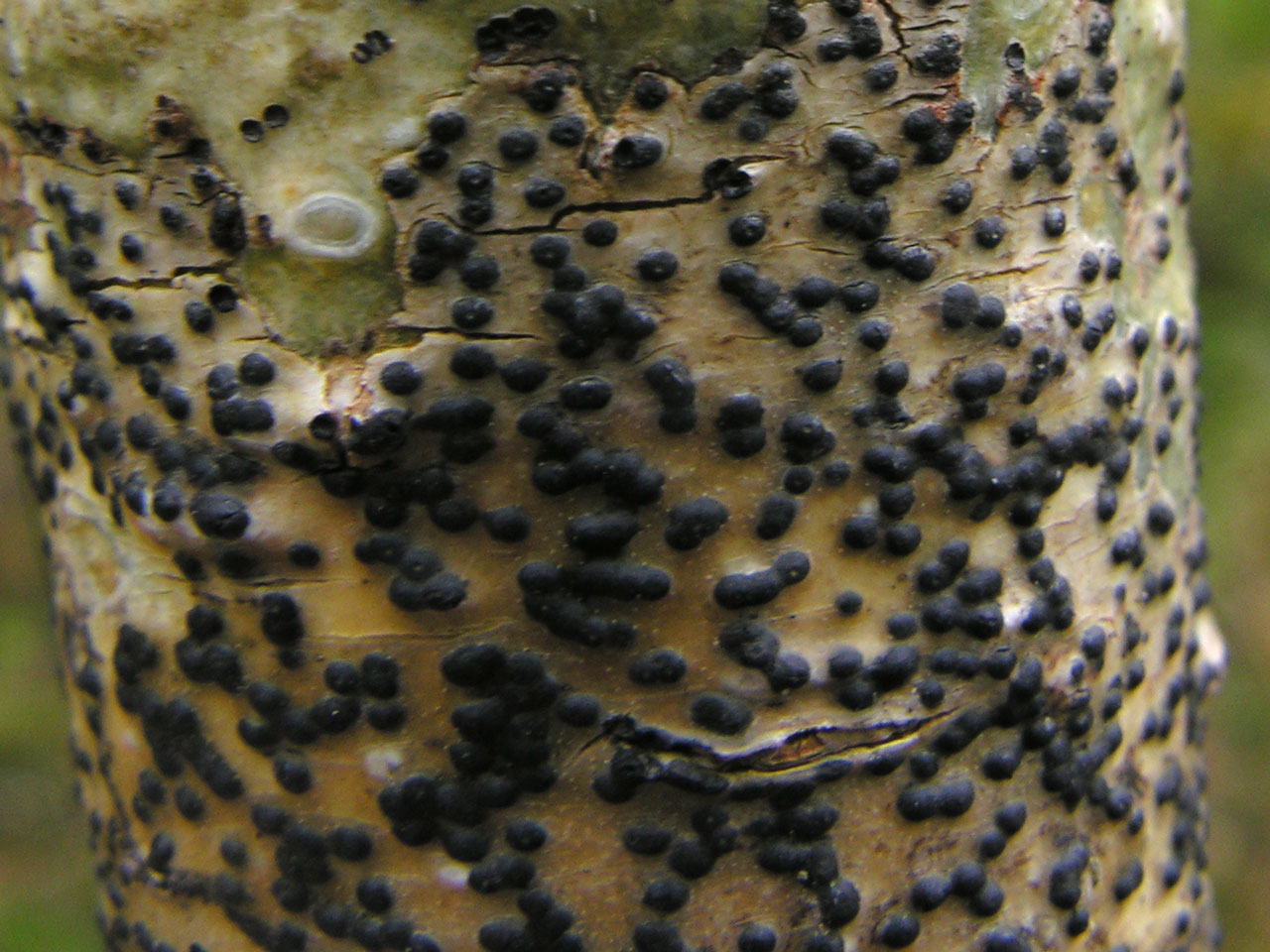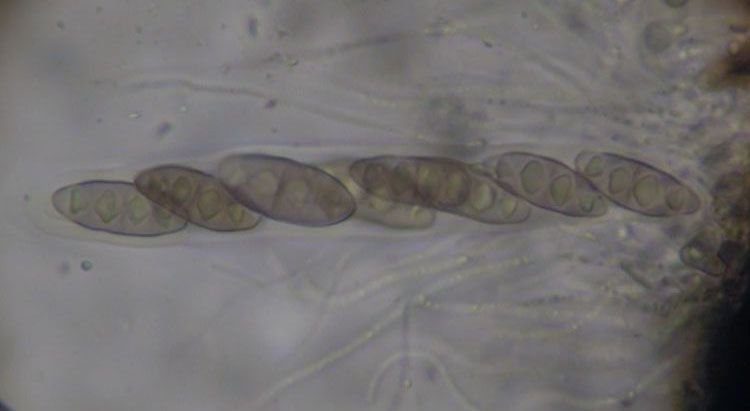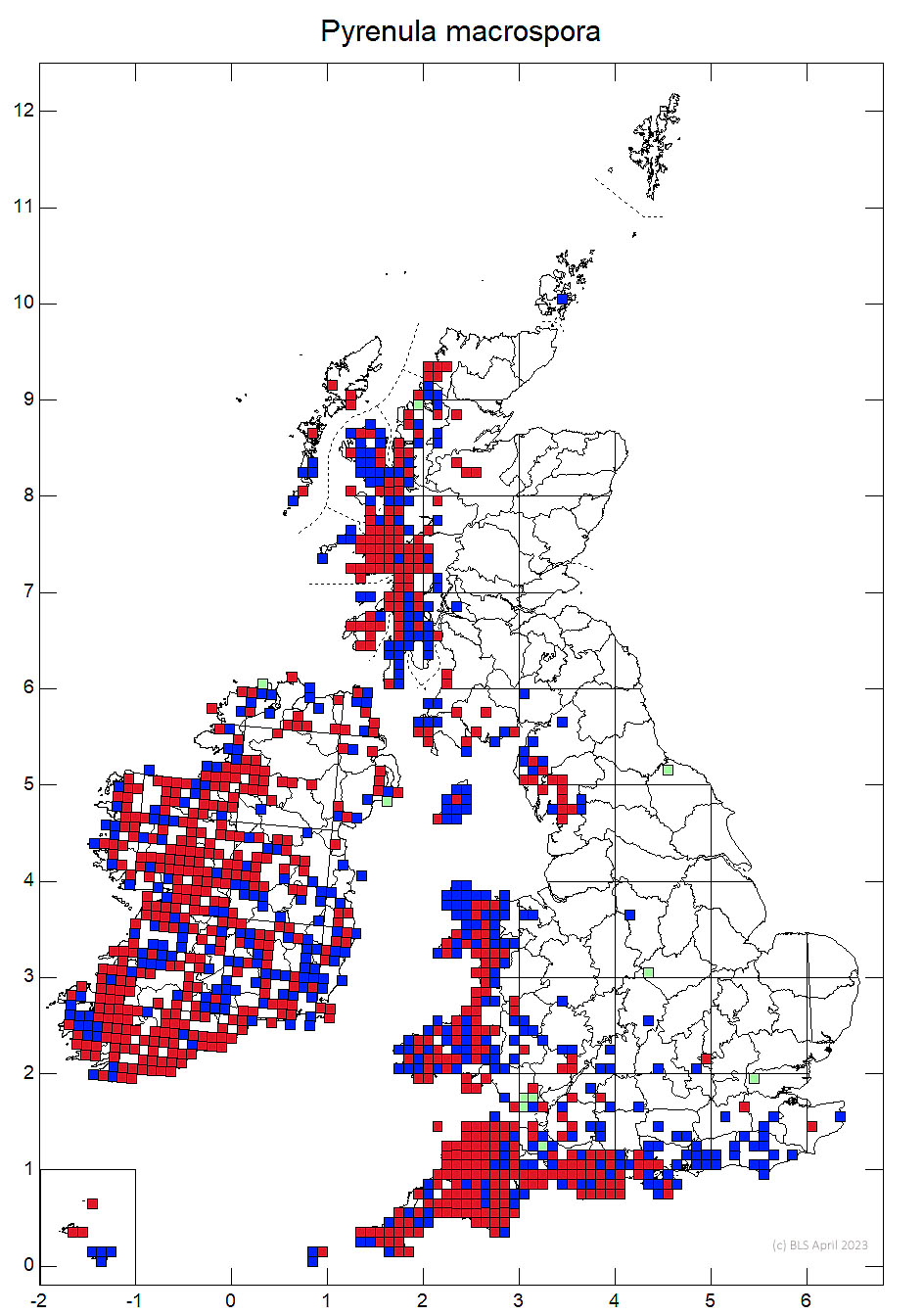The most frequent Pyrenula in Britain, distinguished in the field from most other species by the large perithecia and presence of the white dots of pseudocyphellae. The only similar species is the rare P. nitida, confined to south east England which differs in the K+ red inner exciple and the smaller ascospores. Pyrenula macrospora can be abundant in on smooth bark in shaded woods in the west and is a widely distributed but strongly oceanic species. See also the Species Description.
Thallus olivaceous, or fawn to dark brown, with a smooth surface, even near the perithecia; pseudocyphellae 40–120 μm diam., white. Perithecia (0.4–) 0.5–0.9 (–1.2) mm, forming convex projections; exciple containing numerous colourless crystals; hymenium not containing anthraquinones. Ascospores (24–) 27–33 (–36) × (8–) 10– 13 μm, 3-septate. Pycnidia visible as dark dots 100–180 μm diam., frequent, mostly in young parts of thallus, often clustered along junctions between adjacent thalli; conidia curved, 10–16 × ca 0.8 μm. Thallus C–, K+ yellow, KC–, Pd+ faintly yellow, UV± weak yellow (unidentified substance).
The commonest British species of the genus. Most pre-1980 records of P. nitida from Britain and Ireland refer to this species. Distinguished in the field from most other species by the large perithecia and presence of pseudocyphellae. The rare P. nitida differs in the K+ red substance flanking the inner exciple and the smaller ascospores. P. macrospora often grows with P. chlorospila, which differs in the smaller perithecia which scarcely form projections on the thallus.
On smooth, more or less shaded bark of deciduous trees; locally common, to the south often with P. chlorospila, and can dominant much of the smooth bark in shaded humid woods.

Throughout S. & W. Britain and Ireland, a widely distributed but strongly oceanic species. A British speciality, which is rather rare in western continental Europe. In most of Europe P. nitida is the more frequent species.
Cannon, P., Coppins, B., Aptroot, A., Sanderson, A. & Simkin, J. (2023). Perithecial genera I, including Acrocordia, Alloarthopyrenia, Anisomeridium, Antennulariella, Arthopyrenia, Celothelium, Cyrtidula, Dichoporis, Eopyrenula, Julella, Leptorhaphis, Leptosillia, Lithothelium, Mycomicrothelia, Mycoporum, Naetrocymbe, Pyrenula, Rhaphidicyrtis, Sarcopyrenia, Swinscowia and Tomasellia. Revisions of British and Irish Lichens 37: 1-59.
Text by Neil A Sanderson





